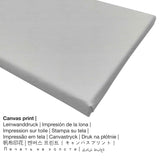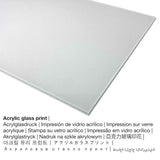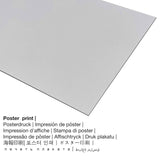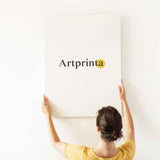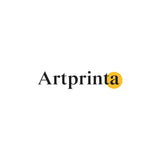Piero di Cosimo, 1494 - Powrót z polowania - druk artystyczny
Podatek jest wliczony. Koszt wysyłki zostanie obliczony W kasie.
Oferta produktów do druku
Powrót z polowania was created by Piero di Cosimo in 1494. Oryginał mierzy dokładne wymiary: 27 3/4 x 66 1/2 cala (70,5 x 168,9 cm). Tempera and oil on wood was used by the artist as the technique for the artpiece. This artwork can be viewed in in the Metropolitan Museum of Art art collection, which is one of the world's largest and finest art museums, which includes more than two million works of art spanning five thousand years of world culture, from prehistory to the present and from every part of the globe.. With courtesy of: The Metropolitan Museum of Art, New York, Gift of Robert Gordon, 1875 (licencja domeny publicznej). : Prezent Roberta Gordona, 1875. Do tego dochodzi wyrównanie krajobraz i ma stosunek boków 5: 2, co implikuje długość jest dwa i pół razy większa niż szerokość. Piero di Cosimo was a male painter from Italy, whose artistic style can be classified as Early Renaissance. The Italian artist was born in the year 1461 in Florence, Firenze province, Tuscany, Italy and died at the age of 60 w roku 1521.
Zamów materiał przedmiotu, który powiesisz na swoich ścianach
Oferujemy szeroką gamę różnych materiałów i rozmiarów dla każdego produktu. Dostępne są następujące opcje indywidualizacji:
- Wydruk na płótnie: The UV printed canvas stretched on a wood stretcher frame. What is more, canvas produces a lively and comfy feeling. Canvas prints are relatively low in weight, which means that it is easy and straightforward to hang up the Canvas print without any wall-mounts. Because of thatcanvas prints are suitable for all kinds of walls.
- Nadruk z dibondu aluminiowego: An Aluminium Dibond print is a material with an outstanding depth. The non-reflective surface make a modern look. The colors are bright and vivid in the highest definition, the fine details of the print appear crisp and clear, and you can feel the matte appearance of the surface.
- Drukowane szkło akrylowe (z powłoką z prawdziwego szkła na wierzchu): The print on acrylic glass, which is often denoted as a plexiglass print, makes your favorite original work of art into great wall décor and forms a good alternative option to canvas and dibond fine art replicas. With an acrylic glass art print sharp contrasts and also minor details become more identifiable due to the granular tonal gradation. The real glass coating protects your custom art replica against light and external influences for many years to come.
- Drukowany plakat (materiał płócienny): A poster is a printed canvas with a nice finish on the surface, that resembles the original work of art. A print poster is perfectly used for framing your art replica with a special frame. Please note, that depending on the size of the canvas poster print we add a white margin 2-6cm round about the print in order to facilitate the framing with your custom frame.
Nota prawna: We try everything to describe our products in as much detail as possible and to demonstrate them visually in our shop. Please keep in mind that the colors of the printing material and the printing might diverge slightly from the representation on the device's monitor. Depending on your settings of your screen and the quality of the surface, not all color pigments are printed one hundret percent realistically. Since the art reproductions are processed and printed manually, there might also be slight variations in the size and exact position of the motif.
O tym produkcie
| Drukuj typ produktu: | druk artystyczny |
| Reprodukcja: | reprodukcja w formacie cyfrowym |
| Metoda produkcji: | Druk bezpośredni UV (druk cyfrowy) |
| Produkcja: | wyprodukowany w Niemczech |
| Rodzaj zapasów: | produkcja na żądanie |
| Przeznaczenie: | dekoracja ścienna, galeria druku artystycznego |
| Orientacja obrazu: | wyrównanie krajobrazu |
| Współczynnik proporcji obrazu: | (długość : szerokość) 5 : 2 |
| Implikacja stosunku bocznego: | długość jest dwa i pół razy większa niż szerokość |
| Warianty materiałowe pozycji: | nadruk w metalu (dibond aluminium), wydruk plakatu (papier płócienny), wydruk na szkle akrylowym (z powłoką z prawdziwego szkła), wydruk na płótnie |
| Opcje obrazu na płótnie (płótno na blejtramie): | 50x20cm - 20x8", 100x40cm - 39x16", 150x60cm - 59x24", 200x80cm - 79x31" |
| Wydruk na szkle akrylowym (z powłoką z prawdziwego szkła) rozmiary: | 50x20cm - 20x8", 100x40cm - 39x16", 150x60cm - 59x24", 200x80cm - 79x31" |
| Opcje rozmiaru wydruku plakatu (papier płócienny): | 100x40cm - 39x16" |
| Rozmiary obrazu Dibond (materiał aluminiowy): | 50x20cm - 20x8", 100x40cm - 39x16" |
| Oprawa do druku artystycznego: | Bez ramki |
Podstawowe informacje o oryginalnym dziele sztuki
| Nazwa dzieła sztuki: | "The Return from the Hunt" |
| Klasyfikacja dzieł sztuki: | malarstwo |
| Termin ogólny: | sztuka klasyczna |
| Klasyfikacja czasowa: | 15th wieku |
| Stworzony: | 1494 |
| Przybliżony wiek dzieł sztuki: | wokół 520 lat |
| Oryginalny nośnik grafiki: | tempera i olej na drewnie |
| Oryginalny rozmiar grafiki: | 27 3/4 x 66 1/2 cala (70,5 x 168,9 cm) |
| Muzeum / kolekcja: | Miejskie Muzeum Sztuki |
| Lokalizacja muzeum: | Nowy Jork, Nowy Jork, Stany Zjednoczone Ameryki |
| Strona internetowa: | www.metmuseum.org |
| Rodzaj licencji na dzieło sztuki: | domena publiczna |
| Dzięki uprzejmości: | Metropolitan Museum of Art, Nowy Jork, prezent od Roberta Gordona, 1875 |
| Linia kredytowa grafiki: | Prezent Roberta Gordona, 1875 |
O malarzu
| Artysta: | Piero di Cosimo |
| Inne nazwiska artystów: | Piero di Cosimo, Piero da Cosimo, Piero di Lorenzo di Piero d'Antonio, di cosimo piero, Piero di Lorenzo, P. di Cosiano, Piero, Pietro da Cosimo, Cosimo Piero di, Lorenzo Piero di, Di Lorenzo |
| Płeć: | zły |
| Narodowość artysty: | włoski |
| Zawody artysty: | malarz |
| Ojczyzna: | Włochy |
| Klasyfikacja artystów: | stary mistrz |
| Style sztuki: | Wczesny renesans |
| Życie: | 60 roku |
| Urodzony w roku: | 1461 |
| Urodzony w (miejsce): | Florencja, prowincja Firenze, Toskania, Włochy |
| Zmarł w roku: | 1521 |
| Zmarł w (miejsce): | Florencja, prowincja Firenze, Toskania, Włochy |
Ten tekst jest chroniony prawem autorskim © , www.artprinta.com (Artprinta)
(© - Metropolitan Museum of Art - www.metmuseum.org)
Dating about 1507–8, these companion panels showing a hunt by men and satyrs and their return from the hunt are among the most singular works of the Renaissance. Their principal inspiration was the fifth book of the De Rerum Natura by the Epicurean poet and philosopher Lucretius (ca. 99–55 B.C.). A manuscript of Lucretius’s work was discovered in 1417 and published in Florence in 1471–73. Lucretius believed that the workings of the world can be accounted for by natural rather than divine causes and he put forward a vision of the history of primitive man and the advent of civilization. For more information about these two paintings, including the dispute about their function and patron, visit metmuseum.org.


